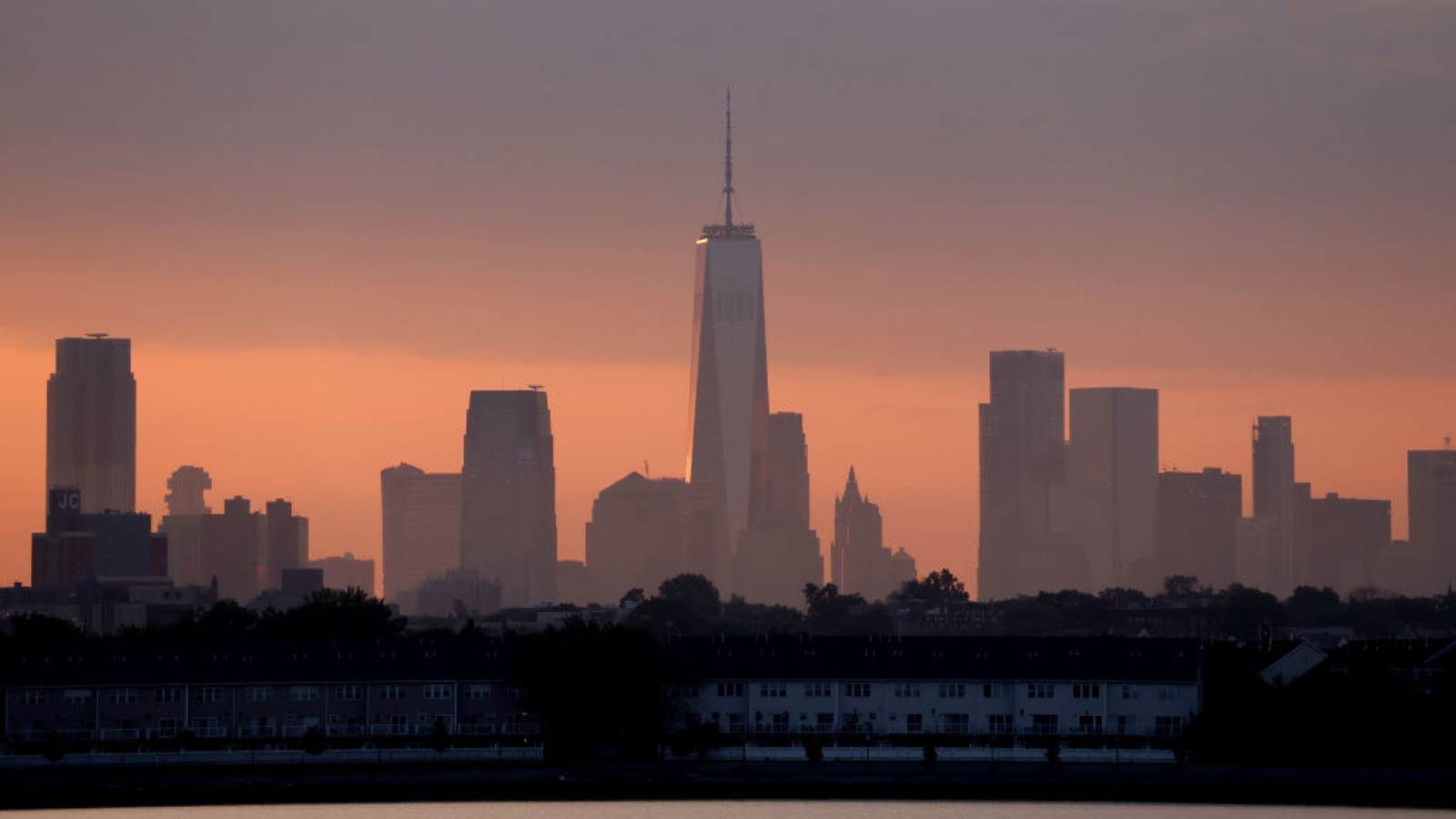Like many coastal cities around the world, New York City is sinking. On a year-to-year basis, the rate of its descent into the Earth is practically imperceptible, but over time those millimeters add up: Today, the city is 9 inches lower than it was in 1950 — a number that has serious implications for waterfront neighborhoods that are having to reckon with increasingly extreme storms.
Sea level rise isn’t the only culprit behind the sink. The city is also being literally weighed down by its massive skyscrapers. The influence of those trillions of pounds of steel and concrete on the city’s rate of sinking is the subject of a paper, published earlier this month in the scientific journal Earth’s Future.
New York’s skyscraper-driven sink is due to a process known as subsidence, or the gradual caving in of an area of land. The phenomenon can result from a number of factors including sediment deposition or resource extraction, but in New York City it comes down to the sheer weight of the built environment.
Unsurprisingly, that weight (or “urban load,” as the authors call it) is greatest in Manhattan’s midtown and its downtown waterfront, the sites of many of the towering buildings that make up the city’s iconic skyline. But the paper also identifies subsidence-prone areas in certain parts of south Brooklyn, the Bronx, and Queens where many of the city’s sprawling public housing developments are located.
Some boroughs are more equipped to deal with the sinking threat than others.
There is an ambitious plan in place to protect Manhattan from the risk of storm surge and sea level rise. After Superstorm Sandy struck in the fall of 2012, pushing a 13-foot wall of water onto the city’s waterfront and causing $19 billion in damages, the federal government allocated millions of dollars towards a climate resilience plan called the “Big U.” The project, which is slated to be completed in 2026, will wrap Manhattan in a vast grassy shield designed to protect it from future flooding.
But the boroughs of Brooklyn, Queens, and the Bronx, where the superstorm hit communities hardest, have not received the same support. To date, there is no comprehensive plan to protect people in the outer boroughs from the threat of future extreme weather events. The 177,000 individuals residing in New York City Housing Authority developments — roughly 1/16th of the city’s population — are particularly vulnerable. Sandy’s storm surge flooded 10 percent of NYCHA housing, knocking out power to more than 400 buildings and leaving 350 without heat or hot water.
While the city has made some progress in funding and developing climate mitigation projects, “these investments and benefits haven’t been seen and felt by all, especially by communities who have experienced these impacts first and worst due to historic disinvestment and systemic racism,” testified Eunice Ko, the deputy director of the New York City Environmental Justice Alliance, on the 10-year anniversary of Superstorm Sandy last October. According to city data, almost 90 percent of NYCHA residents are either Black or Latino.
Eddie Bautista, the executive director of the Alliance, told Grist that while he thinks local authorities should consider the study’s findings, there are more pressing ways in which climate change is affecting the city’s most vulnerable right now. He pointed out that 350 people on average die from heat-related causes in New York each year — far more than the number who die from floods. Indeed, although a wealth of scientific literature has made the connection between high rates of subsidence and dangerous storm surge, it will take many years for the figures highlighted in the study to translate into significantly worse floods.
“I could see why this study is a point of interest but frankly there are far more pedestrian, daily vulnerabilities and literally people at risk of dying,” he said. “There’s a ton more that the government could be doing to make New Yorkers more resilient to increasing impacts from climate change.”




